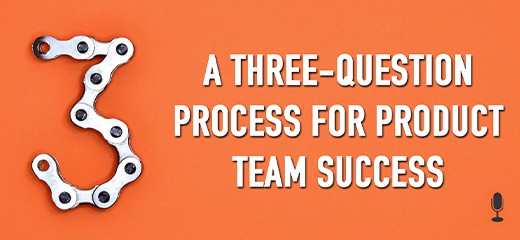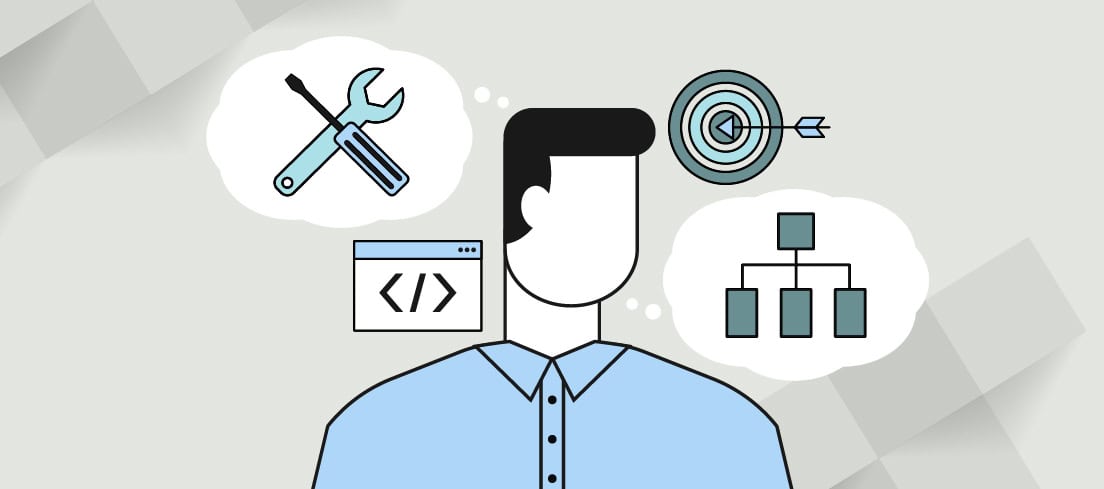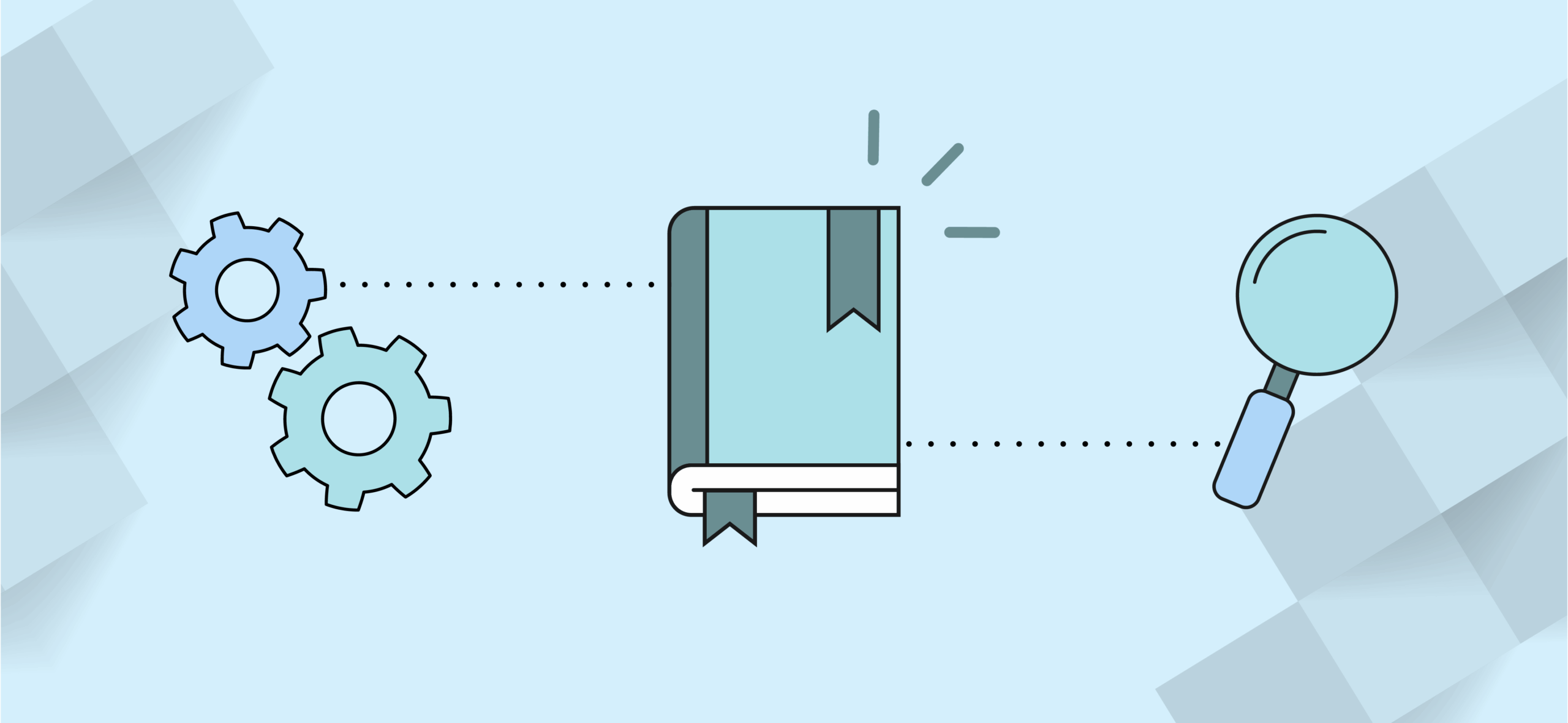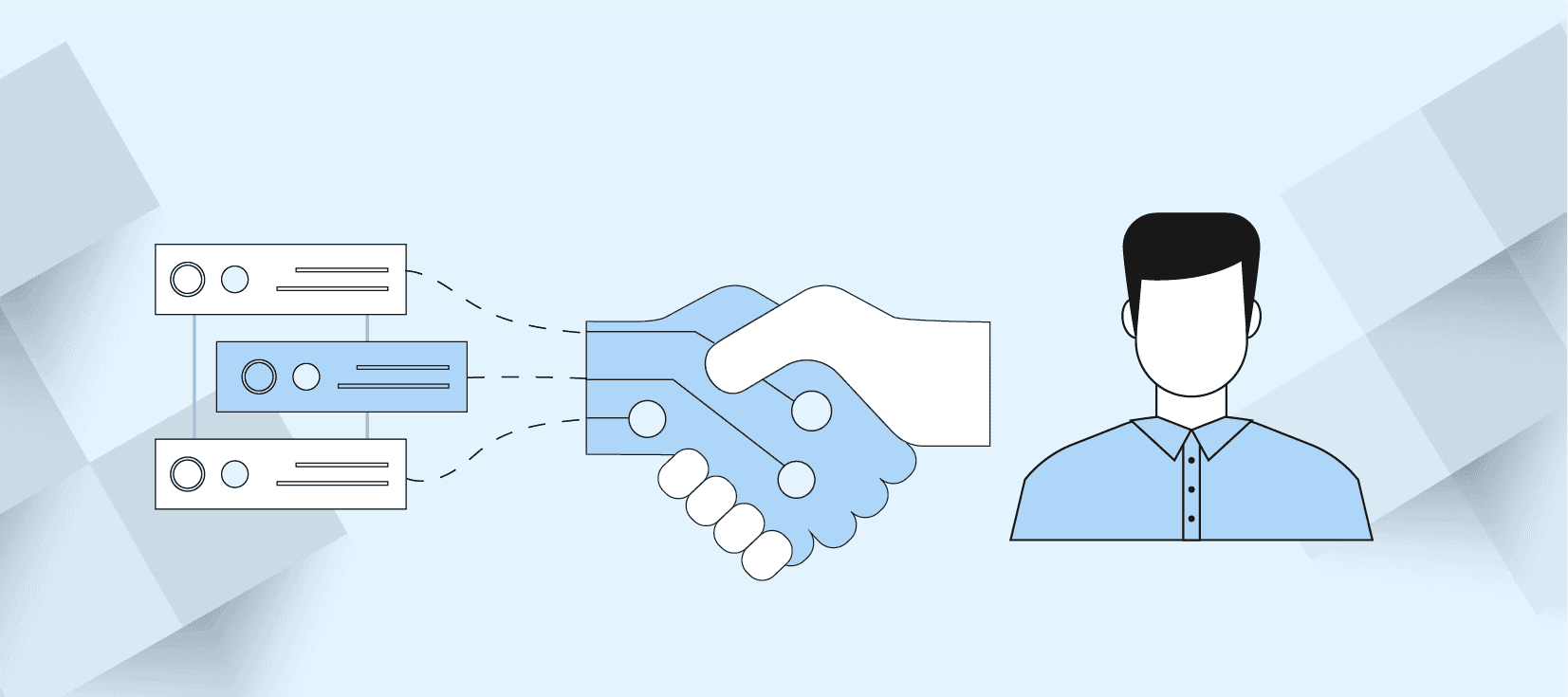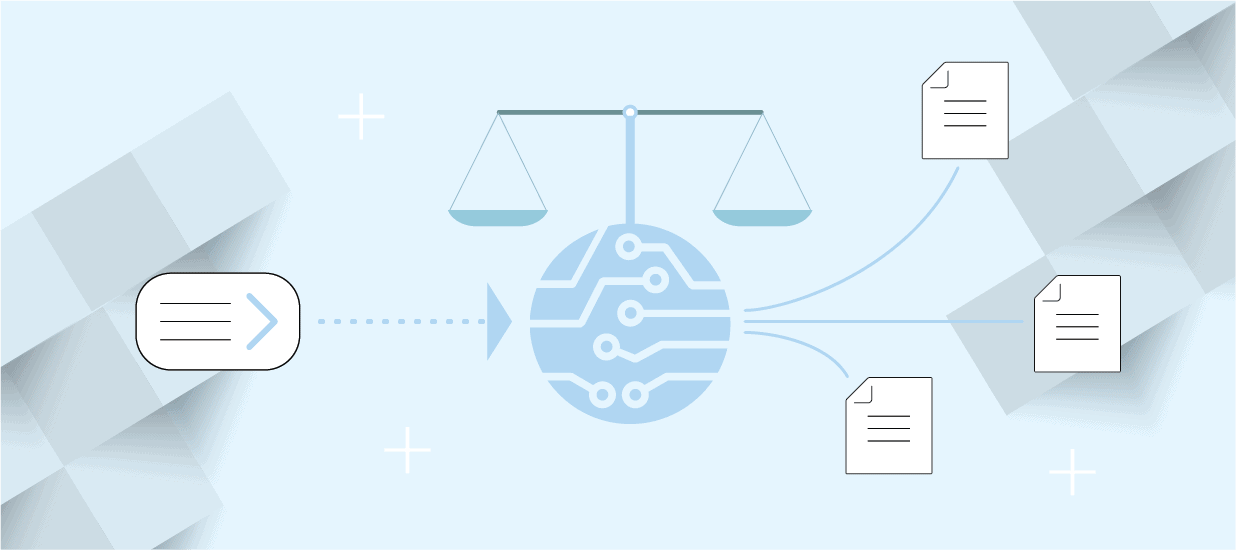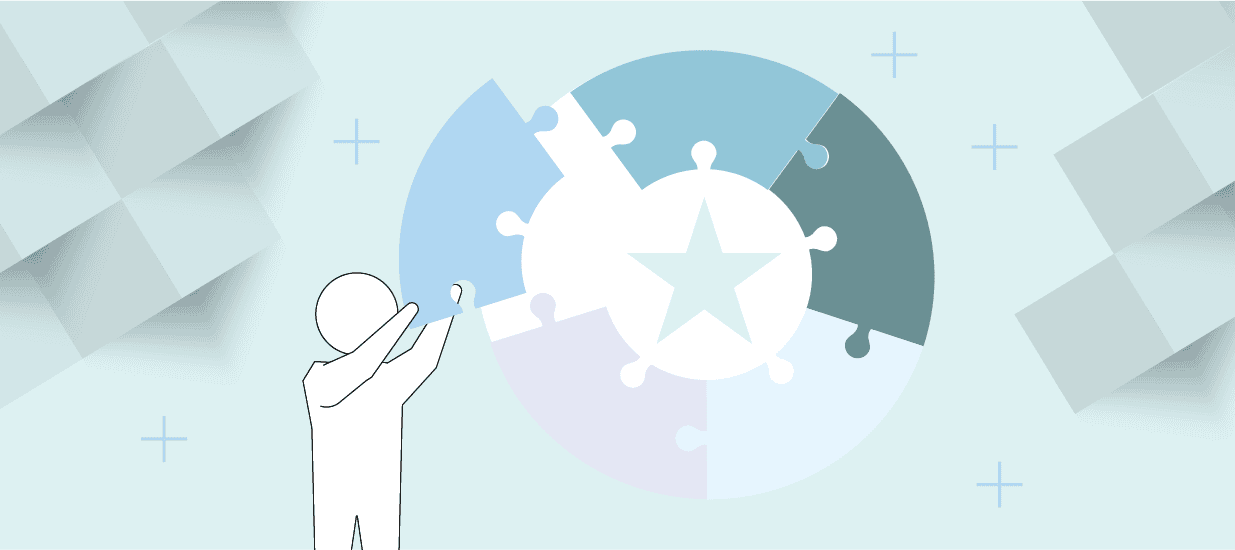Listen to or download the original podcast here ![]()
A Three-Question Process for Product Team Success
How do managers take what their teams have learned and turn it into something tangible? How do those team members take that knowledge and apply it to their roles?
Lori Haakmeester of Cox Automotive joins Rebecca Kalogeris, Pragmatic Institute’s VP of Marketing and Sales to discuss her approach to creating a system of using her team’s learned skills so that it doesn’t feel like another task, and how she created a three-question process to discover the essentials of product success within their organization.
Listen in as we discuss Lori’s three questions that include:
- What is my market opportunity?
- Where is my product headed, and why?
- What does success look like, and am I achieving it?
Rebecca: Hello, and welcome to the pragmatic Live podcast series where we tackle the biggest challenges facing today’s product management, product marketing, and other market and data-driven professionals with some of the best minds in the industry. I’m Rebecca Kalogeris, Vice President of Marketing at pragmatic Institute, and your host for this episode. Today we’re doing one of my absolute favorite types of podcasts. We’re talking to organizations about their journey to becoming market-driven product organizations. And joining me today. We’re very fortunate to have Lori Haakmeester Vice President of new product innovations and product operations for Cox automotive welcome Lori.
Lori: Thanks, Rebecca. Great to be here.
Rebecca: Great. So I know you have a ton of experience in product in lots of different companies. And I’d love to hear a little bit about how you got to Cox automotive and what Cox automotive does
Lori: Sure. So I have worked in different areas of product per se. For over 20 years, different capacities, different organizations, different types of organizations with different types of focus and through that time. And I can tell you the world has evolved, you know, not drastically, because even some of the things that I think are very fundamental that will talk about today.
We were doing a long time ago, but just with different tools and different capabilities and maybe they were much more, you know, paper-based or spreadsheet-based but we’ve a lot more capabilities today, but I still think it you know takes me back to a lot of fundamentals, a lot of that came from to me being a good product person, a lot of that was routed in, I worked a lot with clients initially I did client implementations where we really lived with clients for many years.
And that just really helped me develop a sense for how I think about how do we serve our clients better, what can we offer them that makes their life better makes their business better helps them be more successful and what they’re trying to accomplish. So that’s a little bit about my background with regard to Cox automotive.
Cox automotive is an organization. We’re part of Cox Enterprises but Cox automotive focuses on providing services, products, capabilities to dealers lenders, auto manufacturers and really helping them what they need to run their business to buy and sell cars to move people in the likes of that. And so there’s a lot of different brands that fall into the Cox automotive umbrella, such as auto trader, Kelley blue book, Pivot clutch, dealer.com. And so we really span a large portion of that life cycle and really look to deliver products and solutions to our clients that really help them drive their business.
Rebecca: Great. So I know you’ve been at Cox automotive for about a year, when you came in and you looked at the product organization, what did you see?
Lori: When I came in I was first off really impressed with the diversity of the talent that the organization has and the quality of the work that gets done throughout the organization. So that was kind of my initial impression of I felt very fortunate to be coming into a team that had a lot of strong talent already. And so that’s been a really excellent thing, you know, as I’ve gotten deeper into what other things to these teams need, you know, a lot of it was about how do we operate across the portfolio, not just within individual product lines, you know, so that’s been one of the things that’s important to kind of continue to develop and then the other thing is, is you know what types of things should we be doing consistently versus what types of things maybe need to be very specific to different parts of the business. So we’re always going to have common things we’re always going to have things that have to be different. We try to give teams frameworks. So they have freedom within those frameworks to do the things that best serve their business. The other thing I’ll say is, coming into the organization, the teams have been extremely receptive, welcoming and open to how they approach things differently, how they take what we’ve already been doing really well and leverage that in other parts of the organization.
And so a lot of times you can introduce a lot of change and that can create friction, but my experience here is actually been incredibly positive because the teams have been really excellent at embracing change and looking for ways to actually lead part of that change and how we get better at what we do.
Rebecca: That’s amazing. That’s exactly what you want from the team, right, someone who’s open and always looking at improvements.
Lori: Exactly.
Rebecca: And I know your team knows it does kind of cover the whole product lifecycle. Right. So both what we would consider product management and product marketing.
Lori: Correct. Yes, so my team covers early stage, New Horizon innovation. It covers product operations, client experience, kind of the things that we should be doing really well as a product discipline. And that includes kind of product readiness and commercialization. We have a marketing team that sits within our marketing group as well. They’re obviously key partners to us as we take things to market, but really looking kind of throughout that life cycle and how we really think about what’s new and what new innovation may be needed, and how we solve client problems differently. And then how do we effectively take that to markets and reach the outcomes we expect to achieve.
Rebecca: Now, and I know, I believe. Earlier this year, right, you did a sort of maturity assessment on the organization.
Lori: Correct, yes. We worked across all of our product teams. And really went through kind of an approach to assess where, where are we today. What’s our current state what capabilities do we have that are strong? What are some of our weaknesses really tried to just more objectively, you know, look at how we were approaching what we needed to get done. Because the goal of that would be.
You know, we didn’t want to just go out and say here’s all the things you should do, go do those things we really wanted to say and looking at the teams collectively as well as individually. What are the things that you’re already really good at can we leverage those, what are the things that are weak points are you don’t have the tools and resources that you do need to be effective.
And then how do we kind of put that together to make sure that from from a product Center of Excellence we’re offering up what you actually need not just kind of blanketing like “hey, go do all these things, and you’ll be great.” So it really gave us a way to get a lot of direct feedback from the teams, really understand where they were at in terms of like what their strengths were what their weaknesses were, what gaps they had in terms of like I said missing you know, kind of key tools resources and things, and also helped us kind of across the teams determine where they can leverage each other. So that gave us a really good current state view to work from to work from. And so with that, that kind of helped us build out our plan for what we’re going to do to kind of serve those teams throughout the year.
Rebecca: And I know one of the things that came from that assessment that I’m really excited to dig into is what you guys kind of have called the three essential to market-driven products. He talked a little bit about that initiative, which I know you just kicked off.
Lori: Sure, sure. So I talked about the maturity assessment. One thing I’ll kind of plug is. And we’ve also sent almost 200 team members through different pragmatic courses this year. Right. So they’ve had a really strong introduction, reinforcement, application, of a lot of the things that you get from your pragmatic courses, whether it be foundations, focus, launch, a bit and we sent those three when those classes were not just for product people they were for teams that also work with the product team.
So our partners in marketing our partners and research and market intelligence, partners and sales teams, they went through those classes with us. And it was a really good experience great because it kind of level set us all in a common place. But then we thought, how do we take what we know about the team. So the maturity assessment. How we take what we know people have learned in courses and how do we give them something that really helps them apply it. Not just as another thing to do, but as a way of how they’ll work. What’s the fabric of how they’ll approach the work that they know they have to get done. And so that’s really what led us to this three essentials of product market driven products right and what this really does is it helps us kind of distill this down into kind of three key questions and within these questions. There’s more layers to it, which I’ll talk about but it’s kind of breaks down into three quick key questions.
The first question is, you know, what is my market opportunity. Right. The second question gets us to where’s my product headed and why. And then the third question is what a success look like and am I achieving it? And so as we thought about what should every you’re walking to the elevator, whoever you run into. What should every product person know we got to these three questions. Right. And so we thought that this was a good way to make it you know kind of foundational to how people were approaching their role. And leading their products. And then within each of these questions we’ve given people tools, training, resources, and kind of skill-building tactics, to understand how do I answer these questions. So if I take the first question, which is what is my market opportunity that breaks down into kind of three key components. Its client needs. Understanding client needs. And again, we’ve given them a series of things to think about with regard to design thinking, jobs to be done mapping, just listening empathy type of skills to observe and capture those needs and pain points a second component of that first question, what is my market opportunities market sizing right.
Do I have a structured approach to begin to understand my market opportunities? Do I understand the potential for those market opportunities? And so on and so forth. And then the third component is really that competitive assessment- Do I understand what is going on in the market -who else is going to be looking at that same opportunity they might do?
All right, I might go after and so things are not linear. It’s not like if I do client needs and then market sizing and competitive assessment at the end I’ll have an answer, right, these all correlate and so you may understand some client needs and do some market sizing and look at your competitors, but then you might also start with, like, hey, I’ve gotten a lot of feedback about some competitors, is this important market to go size? And then should I go talk to some clients and better understand whether or not their, their problems are being solved for currently. So again, it begins to break down how these kinds of basic things come together and work together. And again, not just become a task that like, okay, I’m gonna go do a competitive assessment, but it’s more about how they think about how they approach the problems they’re trying to solve and understand their market opportunities.
Rebecca: Well, and I love the approach because your point, these are all tasks or activities that a product manager manager needs to do but to give them an output of being able to answer the question. And both helps them stay focused, but it’s also a level of excitement right, like, someone might ask me this question. That’s great. Someone’s going to engage with me about my business and these are the things that are going to help me represent that well. So I think it, it adds kind of a goal state for them to be that can be very tangible and I would imagine pretty exciting.
Lori: Yeah, I mean I think the teams have been incredibly engaged as we’ve rolled this program out. It’s been awesome. We’ve had excellent participation, questions, challenges right, to how we’re thinking about things and that’s just made the whole process better, which has been an excellent. I think the other thing that’s been really interesting about it is the teams and really started to process how does this actually helped me better in my role as a product leader and
It helps them understand right. How many times have I been asked, like, well, how big is that opportunity? Or what am I really going to get back or how did you prioritize that over the other thing I asked for, you know, so they they’re beginning to process how does this help me have a little bit more, you know, have a fact base to answer those questions with? I think the other thing that it does is, you know, in the world of being a product leader. There’s a ton of things that are coming at you all the time. You’re getting inputs from sales, you have a client that’s unhappy to do it today about something you run into somebody in somebody else and then give you some more inputs. Why don’t we have this? Can we just add this? I need these three things. I mean there’s just this barrage of things always going on that are coming at our product team and how do they begin to rationalize where they start right? How do they begin to rationalize if I do this one thing these three things make perfect sense after that? Or how did I, how did I prioritize one thing or the other and so the things that go into these three essentials really help them. Like I said, build that fact base, the rationale, the why behind here’s what we’re actually delivering and why it ties into a lot of things about why this is a strong opportunity, how this helps us position ourselves against others in the market, how it drives client satisfaction because we’re actually solving their client needs and so on and so forth.
Rebecca: Awesome. And I know that the prioritization and strategy and the why is a big part of the second question that you said people need to be able to answer right. The Where’s my product headed and why?
Lori: Correct, yes. I mean, that’s a, that’s a big thing. So, you know, the first question kind of grounds you. The second question really digs you into what is that rationale and so your product strategy really is, you know, key to that is understand your clients and market and competitors. But then your products really strategy really takes you to what’s my long term vision, not the things I’m just going to deliver in the next release or what I’m going to tell the teams to do with the next few Sprint’s, but it’s anticipating some of the future and the decisions you have to make along the way and the rationale for those decisions so that you’re prepared, not just for the near term, but also for that long term and I think being able to answer that ‘why’ a few times I think again drives a hugely different credibility in what you then kind of deliver over that long term, it helps you with your prioritization and then the roadmap just becomes kind of an outlet to that right where now what’s in the roadmap becomes obvious why it’s there.
Because people understand your strategy, your strategy helps them understand why you prioritize things a certain way and then that kind of drives your, your roadmap now. One of the other things we want to make sure we mentioned is design and prototyping are really important part of how you, you know, work through your strategy. So to work through your strategy, you’re going to have questions.
You’re going to have hypotheses that you want to prove or disprove and one of the best ways we know to do that is through to some design and prototyping work and we want to make sure that we’re learning early, we’re adapting or we’re changing course or killing things off if we need to. If we’re finding that what we think isn’t proving out and similarly, if something is proving out, it’s a great way to make sure that as we get closer to taking something to market. We’re actually going to hit the mark day one and not find out after we’ve launched that we have some things that we didn’t anticipate or plan for
Rebecca: It’s always good to find it early. Right. Then the third question, what does success look like an, am I achieving it.
Lori: So the third question, the key components of that really get into how am I going to measure success. What are my product, you know, key performance indicators, what are the things that I know drive value. How do I value those? And then how do I make sure that those value points are actually being realized by our client? So we want to make sure we’re identifying those key performance indicators before we go to market. And then we want to make sure we have a really good barometer measuring those KPIs as we take things out to market because we may have thought through our you know development process that something was going to be really valuable and we find out we put it in market and it’s more valuable than we thought. Right. And that might lead us to how we position our pricing strategy differently, it might lead us to who we go target. You know, those types of things. So we want to really have KPIs that drive the decisions as we put things into market and measure our success. We also have product emails that go along with that.
And that’s more of a how do we make sure we’re accountable to the performance, we expect that we’ve made an investment in the product we put out and enhancements we’ve put out, How do we make sure we’re measuring that we’re growing and getting the adoption and utilization, that we should expect in order to actually have the performance we want
and then the last thing is really about kind of what are your critical priorities right because again, as a product person there’s a lot of things that are incoming all the time and you really want to make sure people stay grounded in that purpose and priority that they’re focused on. And so we’ve kind of laid it out as kind of a crushing-it development plan for the teams to think through, and that’s really like what are my department’s top priorities.
What are my personal priorities and then, like I said, what’s my crushing-it development plan, how do I plan to go achieve my personal priorities and support my department priorities?
So that’s really kind of the key point at the end of, you know, all of the questions of how am I going to go make sure that that higher purpose, that mission, is what I’m really keeping in the back of my mind every day of this is what we’re. This is what we’re going for. And we’re all we’re all aligned around that.
Rebecca: So one of the things I love about this program that you guys have laid out right so you have three big questions, but in there as probably like 10 big key activities but you put it in this wrapper. That is easy to consume and also a bit is inspirational. Right. The question is in what metrics, would you look like you should you look at it is, what does success look like? It’s the crushing it. There’s an excitement level to it and a bit of an empowerment, like this is the next level. We’re going to reach its get. And I think that’s great because it can be so overwhelming. Whether you’re looking at these 10 items or the 37 framework boxes to figure out how to juggle all these together and the narrative that you’ve laid out that there’ll be able to build, I would think that will keep them nicely focused.
Lori: Yeah, I mean, we wanted to make sure that, again, this just wasn’t. Another thing, another task and, you know, in order to do that, you know, we’re competing with everything else that everybody you know is working on. And so we felt like if we gave this a way to bring some energy to what we do and how we do it, that that would bring the energy back into you know what the outputs would be and so like I said, we’ve had huge engagement from the team’s great participation, you know, we’re still early days, but I’m very encouraged by just the general attitude and receptiveness that all the team members have had, as we’ve been rolling this out.
Rebecca: And then if we were to look forward, six months or a year, what would success look like for you for this program?
Lori: So to me, success looks like, you know, we have teams that again have common things that they do really well. We can see where some of the teams need different things to different parts of our business because some of the parts of our business are very different. Some are more mature than others. Some serve different types of clients than others. And so we want them to have that freedom to serve their business in the best way possible, and also have common you know, approaches.
I think the other thing that would be really successful is you know, a lot of times we find ourselves like kind of answering questions in retrospect, I feel like if we do the things that are in these three essentials really well it really helps turn a lot of that conversation into what is our possibility to do more? How can we achieve more? How can we get further ahead?
You know, and so on and so forth. And so I just feel like this helps people individually as well as teams as well as Cox automotive position ourselves differently in terms of, you know, reacting to, you know, answers to certain questions that may be somewhere in these you know components versus driving you to know that success.
Rebecca: So one more question for you. If you are talking to product leaders and other organizations who were looking at doing this kind of thing, is there any advice that you would give them?
Lori: You know, I think the best advice I would give is we really started this as, how do we better enable our teams, and we wanted to make it a really positive approach and experience to not just give people a lot of standards and, you know, tell them this is the absolute right way to do it., and, you know, there’s no other way we really wanted to make sure that this was something that enrich their experience and made their lives better. And so to us, the biggest part of that was really listening to what the challenges were, you know, current state, you know, digging in and understanding where people were having a lot of success and really highlighting those and helping socialize those in different teams.
But again, just listening and understanding like kind of where people were at. And, you know, kind of working to be in that same place with them and help give them ways to be more effective was really key.
Rebecca: Lori this was great. Thank you so much for coming on and sharing your story and your journey and I can’t wait to hear how it continues.
Lori: I can’t wait either. Thank you so much for everything today, Rebecca. I loved our conversation.
Rebecca: All right, that does it for today’s episode. Thanks everyone for listening and don’t forget to join us next week when we tackle another great topic designed to help you elevate your product, your company, and your career.
Author
-
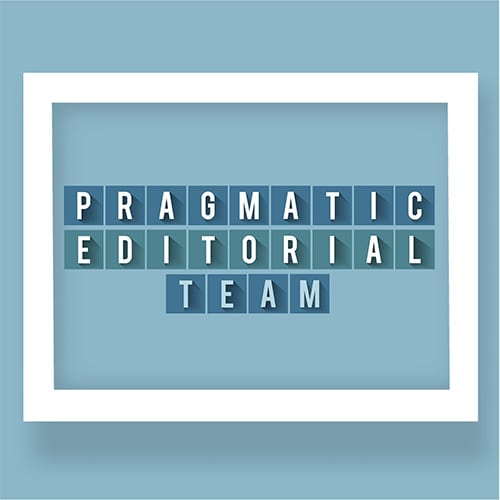
The Pragmatic Editorial Team comprises a diverse team of writers, researchers, and subject matter experts. We are trained to share Pragmatic Institute’s insights and useful information to guide product, data, and design professionals on their career development journeys. Pragmatic Institute is the global leader in Product, Data, and Design training and certification programs for working professionals. Since 1993, we’ve issued over 250,000 product management and product marketing certifications to professionals at companies around the globe. For questions or inquiries, please contact [email protected].
View all posts

